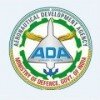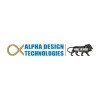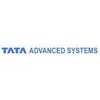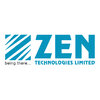Filter interviews by
Nucon Aerospace Process Engineer Interview Questions and Answers
Nucon Aerospace Process Engineer Interview Experiences
1 interview found
I applied via Indeed and was interviewed before Mar 2020. There was 1 interview round.
Interview Questionnaire
1 Question
- Q1. Technical,experience and confidence
Interview Preparation Tips
Top trending discussions






Interview questions from similar companies

I applied via Recruitment Consulltant and was interviewed before Jan 2023. There was 1 interview round.
(1 Question)
- Q1. 1)What is acceptance criteria of stripping and crimping. and how to do. 2)What is the acceptance criteria of splice and how to do. 3)what is the acceptance criteria of booting and how to do. 4) what is the...
- Ans.
Acceptance criteria and methods for stripping, crimping, splicing, booting, and soldering.
Acceptance criteria for stripping and crimping involve proper removal of insulation and secure attachment of connectors.
Acceptance criteria for splicing include proper alignment, insulation, and mechanical strength.
Acceptance criteria for booting involve proper fit, protection, and strain relief.
Acceptance criteria for soldering i...

Junior Engineer Interview Questions & Answers
Aeronautical Development Agencyposted on 12 Jan 2024
(1 Question)
- Q1. Basic Electronics Questions

Junior Engineer Interview Questions & Answers
Alpha Design Technologiesposted on 20 Feb 2023
I applied via Naukri.com and was interviewed in Jan 2023. There were 4 interview rounds.

(1 Question)
- Q1. What is field of technology.
- Ans.
Field of technology refers to the application of scientific knowledge for practical purposes.
Technology involves the use of tools, techniques, and processes to solve problems and improve efficiency.
It encompasses various fields such as information technology, engineering, biotechnology, and nanotechnology.
Examples of technology include smartphones, computers, medical equipment, and renewable energy sources.
Advancements...
(1 Question)
- Q1. Tell me about yourself.
Environment policy India during covid era
Interview Preparation Tips
Process Engineer Interview Questions & Answers
Factocad Robotics and Automationposted on 20 Nov 2024
I applied via Approached by Company and was interviewed in Oct 2024. There was 1 interview round.
(2 Questions)
- Q1. What is 321 principle in GD&T
- Ans.
The 321 principle in GD&T refers to the rule that a feature must be within a specified tolerance zone defined by three datums.
321 principle states that a feature must be located within a tolerance zone defined by three datums
The first datum constrains movement in one direction, the second datum constrains movement in a second direction, and the third datum constrains movement in a third direction
This principle ensures ...
- Q2. How you ensure quality of product
- Ans.
Quality of product is ensured through rigorous testing, adherence to standards, continuous improvement, and collaboration with cross-functional teams.
Implementing quality control measures throughout the production process
Conducting regular inspections and audits to identify and address any issues
Utilizing statistical process control techniques to monitor and improve product quality
Collaborating with suppliers to ensure...
Process Engineer Interview Questions & Answers
Chemvap Engineering Private Limitedposted on 4 Jul 2024
I applied via Referral and was interviewed before Jul 2023. There were 2 interview rounds.
(7 Questions)
- Q1. What is pump hydraulic calculation?
- Ans.
Hydraulic calculation for pumps involves determining the flow rate, pressure, power, and efficiency of a pump system.
Calculate flow rate using the formula Q = VA, where Q is flow rate, V is velocity, and A is cross-sectional area.
Determine pressure using the formula P = F/A, where P is pressure, F is force, and A is area.
Calculate power using the formula P = Q*H*rho*g, where P is power, Q is flow rate, H is head, rho i...
- Q2. What are types of pumps?
- Ans.
Types of pumps include centrifugal pumps, positive displacement pumps, and axial flow pumps.
Centrifugal pumps: use a rotating impeller to increase the pressure of a fluid.
Positive displacement pumps: trap a fixed amount of fluid and then force it into a discharge pipe.
Axial flow pumps: move fluid parallel to the pump shaft.
Examples: Centrifugal pump - water pump, Positive displacement pump - diaphragm pump, Axial flow
- Q3. Explain your achievements?
- Ans.
I have successfully led process improvement projects resulting in cost savings and increased efficiency.
Led a team in implementing a new production process that reduced waste by 20%
Developed and implemented a new quality control system that improved product quality by 15%
Identified and resolved bottlenecks in the production line, increasing output by 10%
- Q4. Any cost reduction experience related to process plants?
- Ans.
Yes, I have experience in implementing cost reduction strategies in process plants.
Implemented lean manufacturing principles to reduce waste and improve efficiency
Optimized equipment maintenance schedules to minimize downtime and reduce costs
Negotiated better pricing with suppliers to lower material costs
Introduced automation technologies to streamline processes and reduce labor costs
- Q5. Troubleshooting experience in process plants?
- Ans.
I have extensive troubleshooting experience in process plants, identifying and resolving issues to ensure smooth operations.
Identifying root causes of process issues
Developing and implementing solutions to improve efficiency
Collaborating with cross-functional teams to troubleshoot complex problems
Utilizing data analysis and problem-solving skills
Adapting quickly to changing situations and priorities
- Q6. Describe Detailed Pump hydraulic calculation?
- Ans.
Pump hydraulic calculation involves determining the pump head, flow rate, and power requirements for a specific system.
Calculate total dynamic head (TDH) by adding the static head, friction head, and velocity head
Determine the required flow rate based on system requirements
Calculate the pump power requirements using the formula: Power (kW) = (Q x TDH) / (3.6 x efficiency)
Consider factors such as pump efficiency, pipe s
- Q7. What is Coefficient of Control valve?
- Ans.
The coefficient of a control valve is a measure of the valve's flow capacity relative to the pressure drop across it.
The coefficient of a control valve, also known as the flow coefficient (Cv), is a dimensionless number that represents the flow capacity of the valve for a given pressure drop.
It is used to compare the performance of different valves and is typically determined experimentally.
A higher coefficient indicat...
(2 Questions)
- Q1. About salary expectation
- Q2. Reason for job change
- Ans.
Seeking new challenges and opportunities for professional growth.
Looking for new challenges to expand my skill set
Seeking opportunities for career advancement
Interested in working in a different industry or with new technologies
Interview Preparation Tips
- Pumps
- Control Valves
- Previous experience
- Heat Exchangers
- Steam economy
- Mass heat balance

I applied via Recruitment Consulltant and was interviewed in Jan 2022. There were 2 interview rounds.

(1 Question)
- Q1. Last company role & Responsibilities, Technical questions related to your experience basis
Interview Preparation Tips
I applied via Job Portal and was interviewed before Apr 2023. There were 2 interview rounds.
(1 Question)
- Q1. Tell me about yourself
(1 Question)
- Q1. How do you lead
I applied via Referral and was interviewed before Jun 2022. There was 1 interview round.
(2 Questions)
- Q1. Questions on Pumps
- Q2. Reactors and types of reactors and there uses
- Ans.
Reactors are vessels designed to contain chemical reactions. Types include batch, continuous, CSTR, PFR, and their uses vary based on reaction requirements.
Batch reactors are used for small-scale production and testing of new reactions.
Continuous reactors are used for large-scale production of chemicals.
CSTR (Continuous Stirred Tank Reactor) is commonly used for homogeneous liquid-phase reactions.
PFR (Plug Flow Reactor...
Process Engineer Interview Questions & Answers
Indorama Ventures Publicposted on 10 Aug 2022
I applied via Company Website

(1 Question)
- Q1. Tyape of heat exchanger, pump type and it's application, ejector, line size, reactor type
- Ans.
The type of heat exchanger, pump, ejector, line size, and reactor type are important considerations for a process engineer.
There are several types of heat exchangers, including shell and tube, plate and frame, and spiral. The choice depends on the specific application.
Pump types include centrifugal, positive displacement, and axial flow. The choice depends on the flow rate and pressure requirements.
Ejectors are used to...
(1 Question)
- Q1. Personal information, sallery discussion
Interview Preparation Tips
Tell us how to improve this page.
Nucon Aerospace Interviews By Designations
- Nucon Aerospace Senior Engineer Interview Questions
- Nucon Aerospace Maintenance Engineer Interview Questions
- Nucon Aerospace Process Engineer Interview Questions
- Nucon Aerospace Graduate Engineer Trainee (Get) Interview Questions
- Nucon Aerospace QA QC Mechanical Engineer Interview Questions
- Nucon Aerospace Mechanical Engineer Interview Questions
- Nucon Aerospace Embedded Developer Interview Questions
- Nucon Aerospace Junior Engineer Interview Questions
- Show more
Interview Questions for Popular Designations
- Process Engineer Trainee Interview Questions
- Process Associate Interview Questions
- Chemical Process Engineer Interview Questions
- Junior Process Engineer Interview Questions
- Processing Executive Interview Questions
- Process Developer Interview Questions
- Assistant Manager Process Engineering Interview Questions
- Process Quality Engineer Interview Questions
- Show more
Interview Questions from Similar Companies
Nucon Aerospace Process Engineer Reviews and Ratings
based on 2 reviews
Rating in categories
|
Engineer
43
salaries
| ₹1.8 L/yr - ₹6.5 L/yr |
|
Senior Engineer
38
salaries
| ₹1.8 L/yr - ₹6.2 L/yr |
|
Assistant Manager
28
salaries
| ₹4 L/yr - ₹8.5 L/yr |
|
Junior Engineer
27
salaries
| ₹1.6 L/yr - ₹4.3 L/yr |
|
Quality Engineer
26
salaries
| ₹2 L/yr - ₹5 L/yr |

Aeronautical Development Agency

Mahindra Defence Systems

Tata Sikorsky Aerospace

Alpha Design Technologies
- Home >
- Interviews >
- Nucon Aerospace Interview Questions >
- Nucon Aerospace Process Engineer Interview Questions












